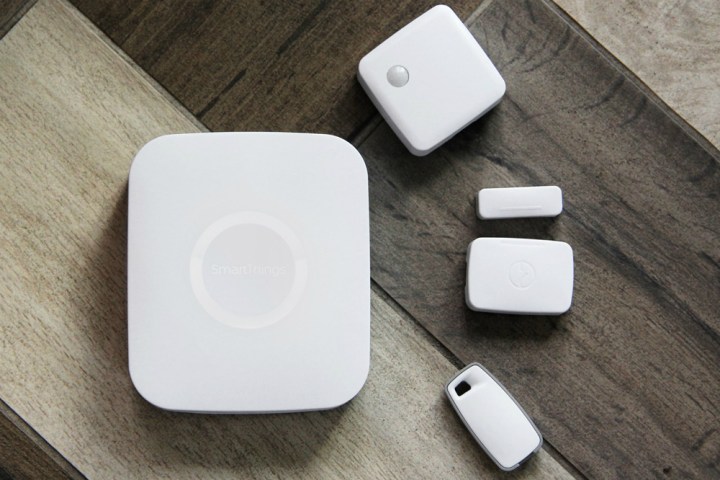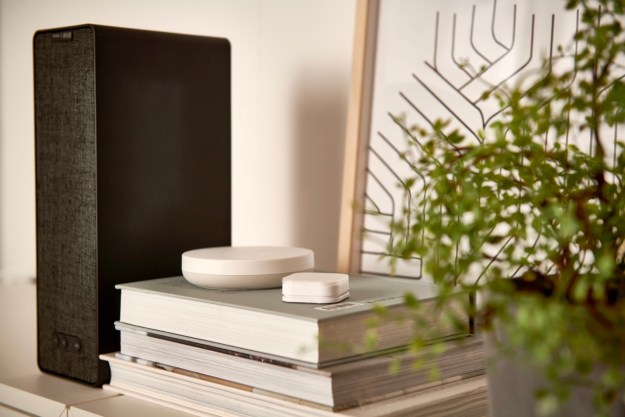
The press event kicked off with the revamped Hub from SmartThings, the open-platform smart-home startup that Samsung acquired last year for a reported $200 million.
The Hub supports whatever compatible smart sensors you decide to place around your home, and relays data over the Internet to and from the cross-platform SmartThings app, which, incidentally, has itself been given a makeover.
The refreshed Hub, which now incorporates a battery pack that’ll keep the system ticking along for up to 10 hours in the event of a power outage, comes with a new processor powerful enough to enable video monitoring, while improved performance means it can now carry out some tasks locally without the need for an Internet connection.
Live streams from connected cameras can be accessed via the SmartThings app at any time, and alerts are sent when unexpected motion is detected inside your home. So whether it’s your dog knocking over a potted plant or a burglar stealing your laptop (and possibly your lovingly curated collection of Star Wars DVDs, too), you’ll know about it within seconds and will be able to act accordingly.
While SmartThings offers its own range of newly designed sensors, other companies are also building their own devices for the platform, with several hundred devices detecting everything from motion to temperature to leaks currently available for around $30 to $50 each.
The Hub is available online now for $99, with brick-and-mortar stores stocking it from next month. The kit will also make its way to U.K. shores on September 10, with consumers offered a £199 starter pack comprising the Hub, three sensors (motion, presence, open/close for doors and windows), and a SmartOutlet power switch for turning an appliance on or off. And more sensors are on the way.
Of course, Samsung isn’t the only outfit vying to get into your home. Besides plenty of smaller startups, giants like Google, for example, recently unveiled Project Brillo that sits alongside its range of Nest products, while Samsung rival Apple is hoping its HomeKit system will prove a hit with iOS users looking to automate their homes.
Editors' Recommendations
- Echo Hub vs. Echo Show 15: Which is the best smart home gadget?
- Nest Hub Max vs. Skylight Cal Max: Which is best for your home?
- Samsung SmartThings learns a bunch of useful new tricks at CES 2024
- Samsung reveals futuristic new smart home appliances for CES 2023
- How to program your smart hub to scare the pants off of you


